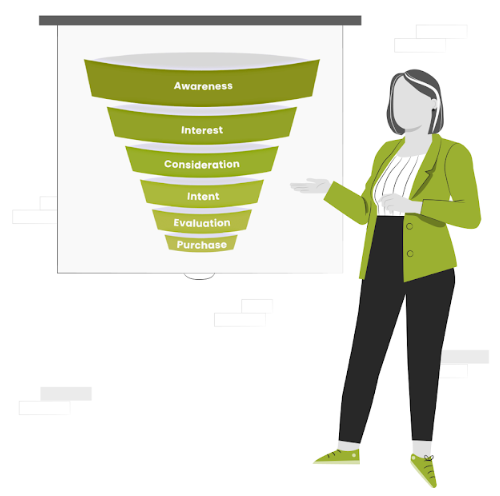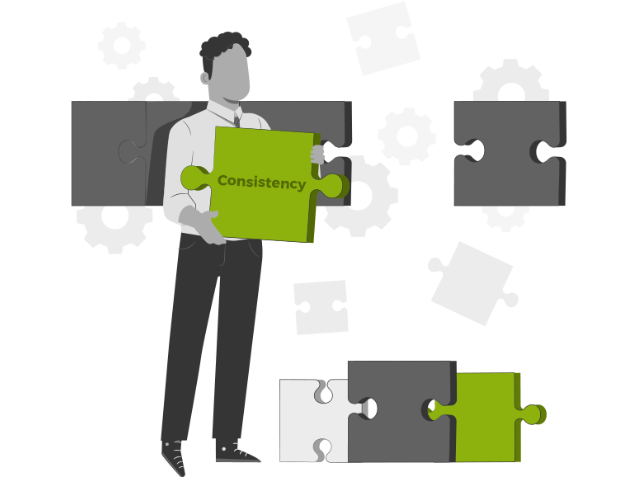Looking to optimize your cross-platform advertising strategies and improve overall marketing performance? This blog provides valuable insights into creating a cohesive cross-platform advertising strategy.
One of our Meta Ads Account Managers, Jonathan Paquin, talks us through his extensive experience with Meta and how we can use it to our clients’ advantage while balancing it with our already extensive knowledge of Google Ads.
Essentially, we want these two platforms to work together. Consistency in headlines and offers should be at the forefront of a cooperative campaign, ensuring they align
Table Of Contents
Main Differences Between Google Ads And Meta Ads
Defining The Sales Funnel

Understanding the marketing funnel from top to bottom is a great starting point. Let’s have a quick look at what you probably already know.
Top-of-funnel (TOF) is for people who are prospecting and may be searching for information but are not yet ready to take the next step. This is where we need captivating and informative content in the hope we can make someone care about us. It’s not always easy to grab attention at this stage of the funnel, so you’re aiming to get the product features across to your audience. Hit the branding hard!
Your example audience in the middle of the funnel (MOF) is already aware of your brand or offer. We can expand the product’s benefits and features and reach out to people with promotions and discounts.
And lastly, the bottom of the funnel (BOF) is for the group of people who have visited your website, who are existing customers, and who know the quality of your product or service. This is a great place where we can retain their attention and loyalty. Leads and sales are the end goal!
Main Differences Between Google Ads And Meta Ads

One key difference between Google and Meta advertising is passive intent versus active intent. Users search for information, products, or services actively on Google, whereas Meta Ads are displayed while browsing the posts of family and friends.
Think of how well Meta knows you. That knowledge is power and it intrinsically knows the best way to present ads to an audience. Meta can anticipate what might interest you before you even know you want a particular product or service.

Meta Ads is more suited to brand awareness and engagement, much like YouTube advertising. Brand storytelling is also better suited to this platform. There is a cool feature known as brand lift which can measure the rise in consumer perception of a brand after a marketing campaign.

Google Ads has high active intent from its consumers. People know what they want and go out of their way to search for it. The platforms have a different approach but if aligned to the best of their ability, this collaboration guarantees higher customer satisfaction.
Meta Ads can generally reach a broader audience at a lower cost, making it cost-effective.
A new product with no direct search because the public doesn’t know it exists means Meta Ads is a better fit. Social proof is another key factor for Meta Ads. This is where customers can give feedback on the ad itself and comment on the reliability of a business, product, or service.
The comments section is a great way to measure the health of a business!
Lastly, when it comes to targeting, Google Ads reports great results when audience segmentation is applied. Guaranteeing your product and service gets to the right people at the right time can give a boost to sales. Meta Ads may be narrowed down even further but best practices say targeting should be left open.
Strategies For Aligning Ad Content Across Platforms

Should creatives and messaging cross over on the Meta Ads and Google Ads platforms? We want our TOF audience to search for the brand after seeing our Meta Ads and we have had success by mirroring the messaging across both platforms.
Overlaying different CTAs, promos, and product features would help in aligning the two platforms. Consistency is significant, ensuring whatever is displayed on one platform is the same on the other platform.

Connecting the copywriting team with the creative team is a great way to expand the available creative resources. Feeding off one another can only increase the originality of messages, GIFs, and mashup videos; anything that adds newness and freshness to the campaign.
When it comes to testing, should the landing page correspond with the product displayed in the creative or should we send traffic to a broader page (e.g., homepage or collection page)? Which is more efficient?
It would depend on the average price of the product. High-ticket items are safe to send to the homepage if the creative and messaging showcase that particular product. If, on the other hand, AOV is a concern, collection-based content works well to showcase the scope of the product line. We can use a collection page to allow customers to shop around a bit.
Leveraging And Optimizing Each Platform For Success

Leveraging the strengths of each platform is vital for a successful crossover campaign. We need to be on the same page and get twice the push from these amazing advertising resources.
It must be said that only a small portion of the market is ready to buy right now. The majority of the market is still considering and researching a potential product or service. That’s why it’s so important to understand the funnel stage: We need to know how to direct our marketing efforts on both platforms.
Here are some tips for optimizing campaigns based on performance data:
For an existing Google Ads client with little to no history of Meta Ads, get started by looking at the best-performing ad angles on Google Ads. We can look into the account and see which headlines, descriptions, images, and videos are getting the most impressions.
These should be tested. Google Ads is showing it for good reason and we want to match that on Meta Ads. It’s low-hanging fruit to align both platforms and ad buyers need to connect on that and share the information.

For new clients with previous Meta Ads history and good results, we can look at the best-performing creatives, the ones with the best reach with extensive sales for specific products. From there, implementing what we know from high-performing Meta Ads campaigns to Google Ads is a solid first step in the right direction. Use that same copy, use those same images!
And for new clients with little to no history of Meta Ads or Google Ads, or have poor results with previous bad setups, we want to start from scratch. This requires a team effort by referencing initial client briefings, current websites, and social media content.
Getting together and brainstorming with the internal marketing department will have the best brains in the marketing world analyzing TOF, MOF, and BOF, and how to get top results on both platforms.
And there you have it. This winning combination of Google Ads and Meta Ads will enhance your marketing strategies while bringing in tangible results. These two platforms can complement one another, expand their net, and give your business the exposure it deserves.
Want to increase your visibility and attract more new customers through Meta Ads? Go to https://sol8.com/meta-ads-management/
Author
Patience is the former director of marketing and communications for Solutions 8. A phenomenal content writer, copywriter, editor, and marketer, she has played a prominent role in helping Solutions 8 become an authority in the Google Ads space. Patience is also the co-author of The Ultimate Guide to Choosing the Best Google Ads Agency and You vs Google.
 Patience Hurlburt-Lawton
Patience Hurlburt-Lawton

